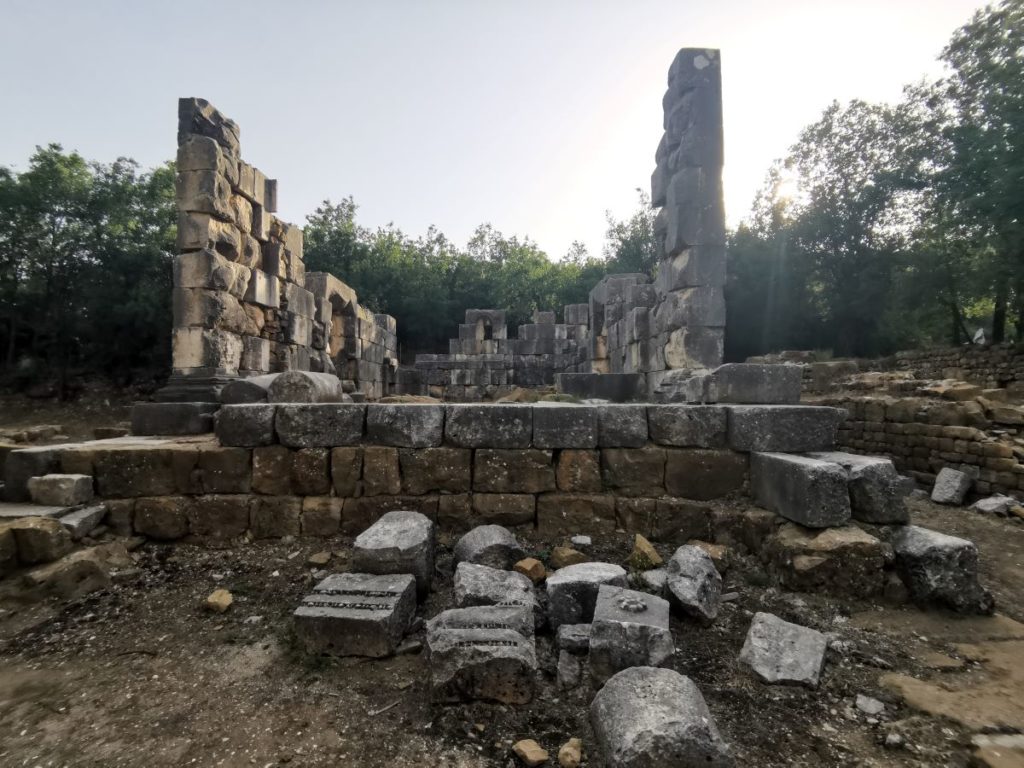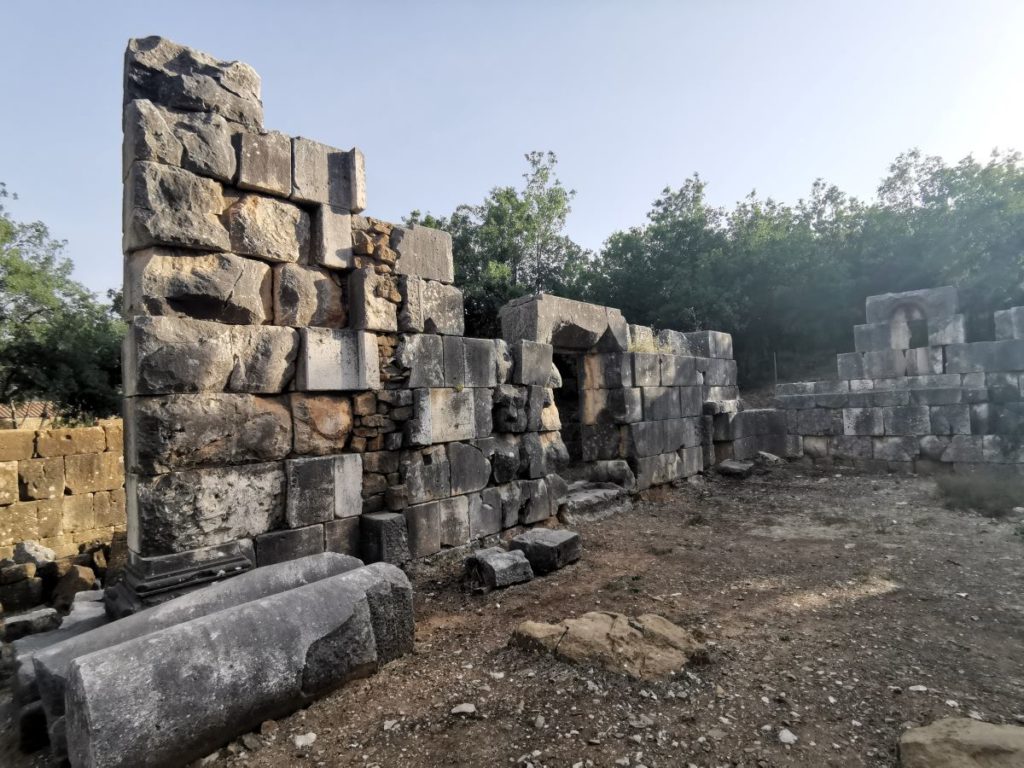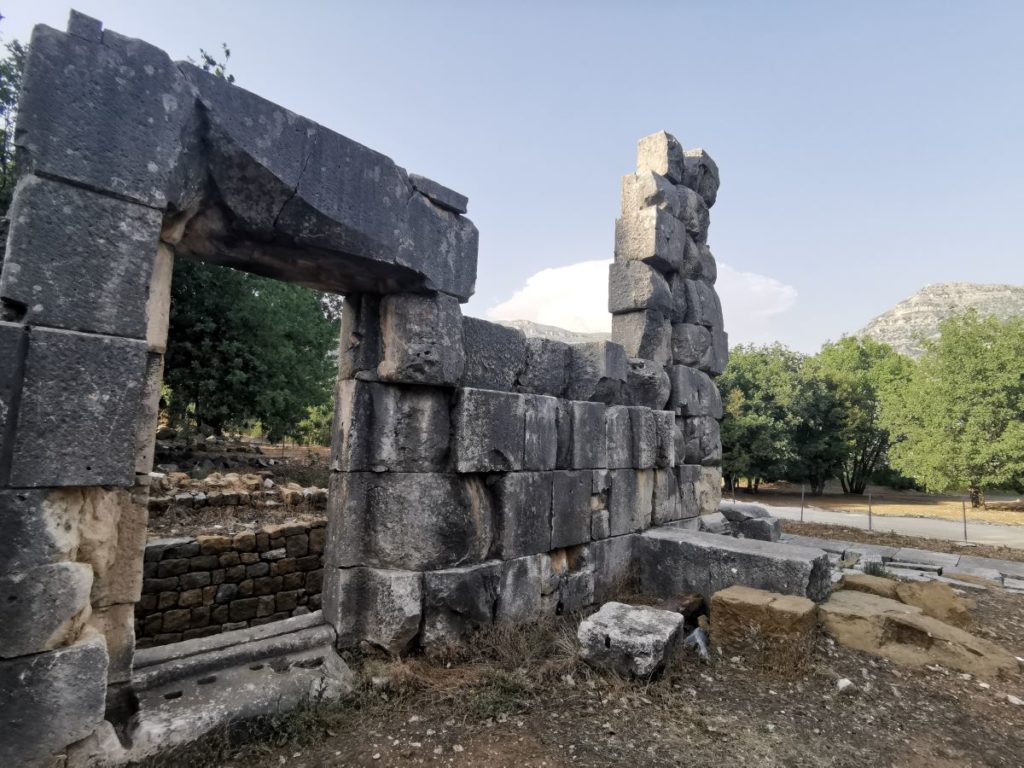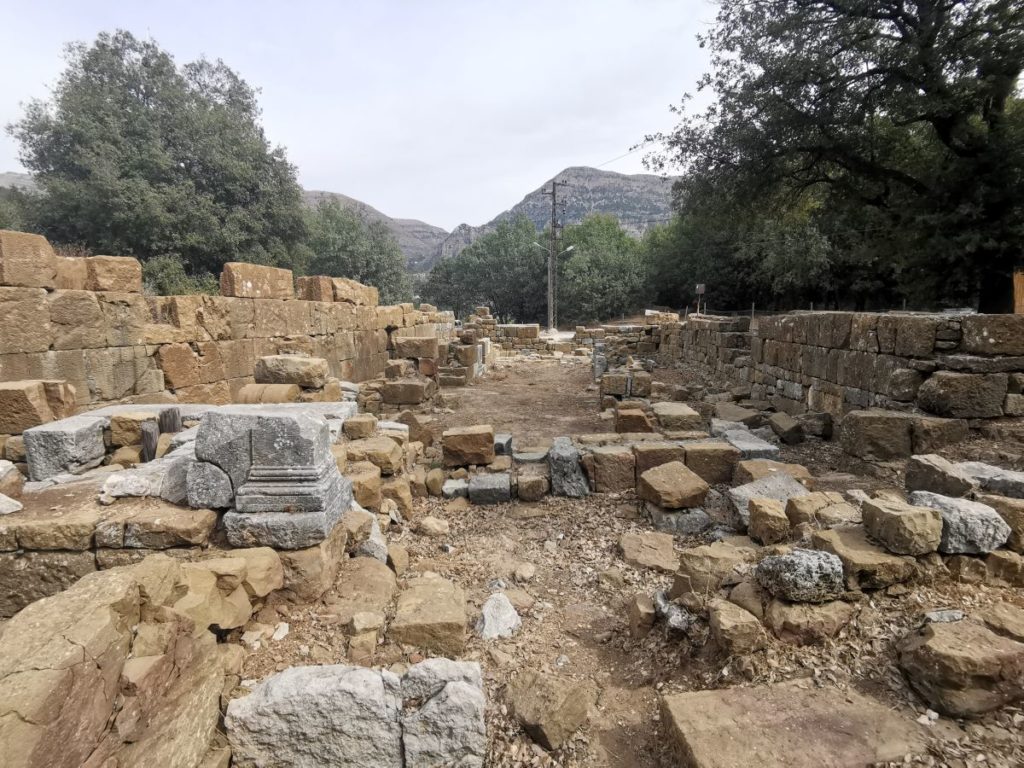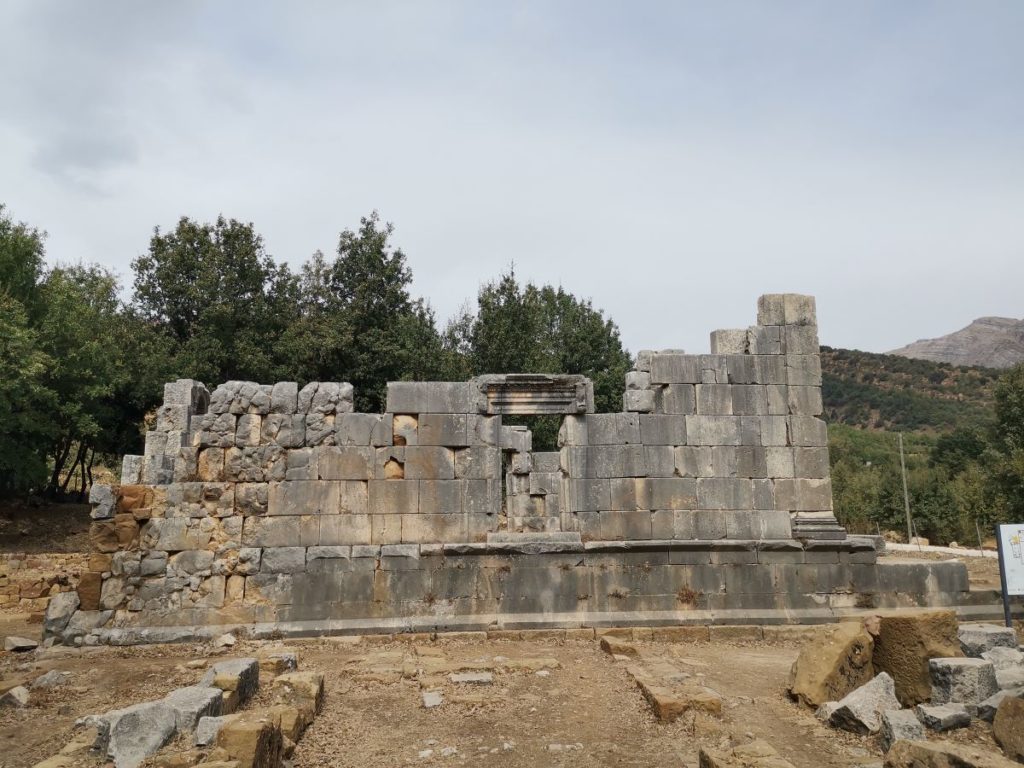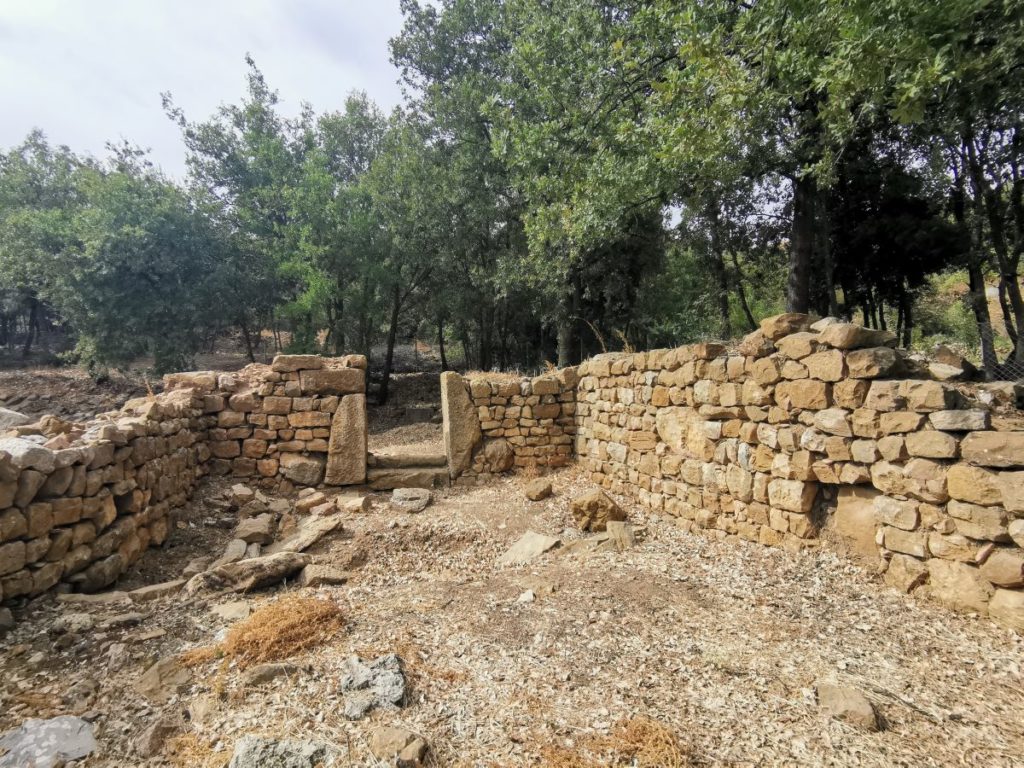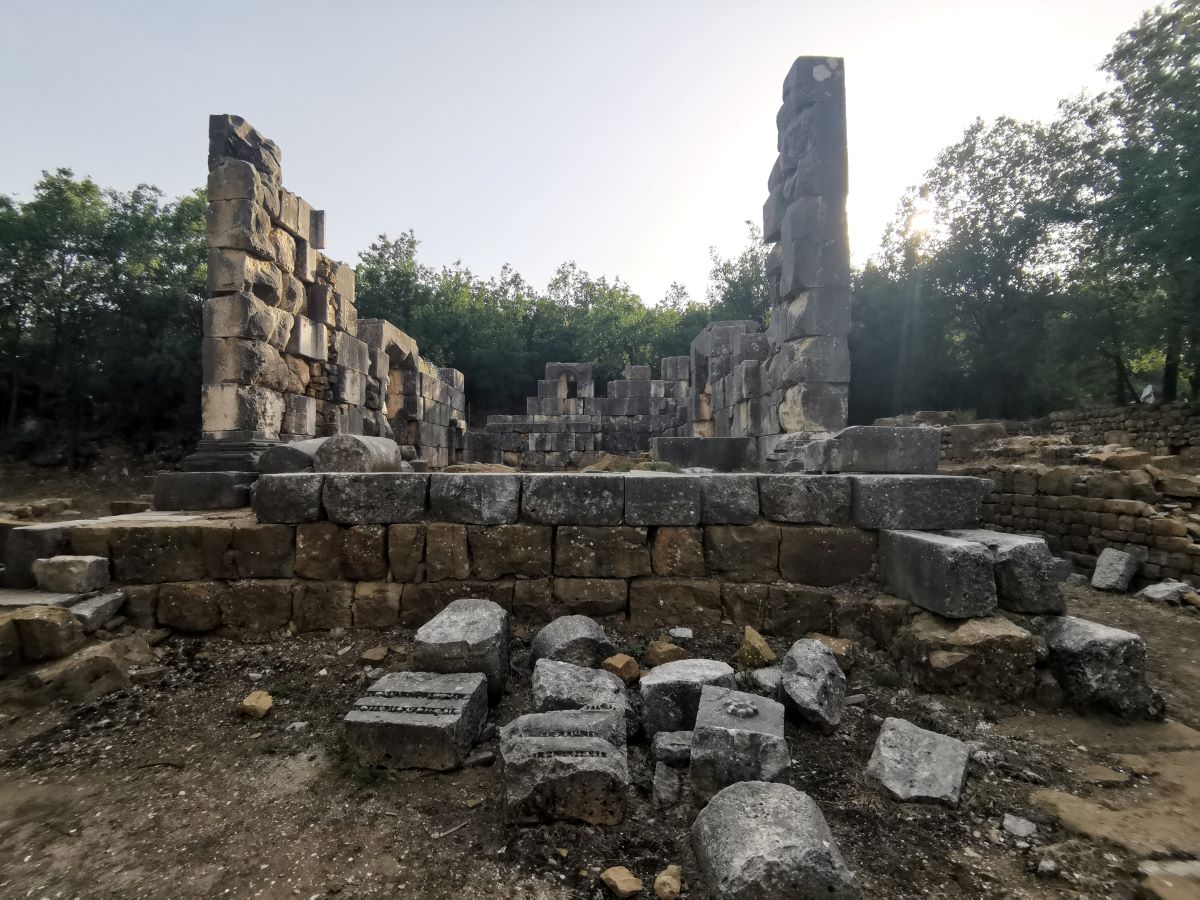The site of Yanouh testifies to a significant human occupation that goes back all the way to the Bronze Age. Thanks to several excavation missions executed since the 1960’s in and around Yanouh area, archeologists were able to produce a comprehensive study about rural life in Mount-Lebanon during antiquity.
This article presents a brief description of Yanouh’s history through its archeological site.
Toponym
The site of Yanouh is famous for its main Roman temple, called Mar Girios el-Azraq (Saint-Georges The Blue) – the name of the church that covered for some time the temple with its blued stones.
Location
The site occupies the upper valley of Nahr Ibrahim (or Adonis River), at an altitude of 1165m. The site is located on the Roman road which connects Byblos to Baalbek through the hinterland – Jobbet El Monaitra – Yamoune.
Timeline
2nd millennium BC – 5th century BC – Inhabiting Mount-Lebanon expands throughout the centuries
2nd century BC – Construction of the 1st religious edifice during the Hellenistic era
2nd century AD – Construction of 2 Roman temples
5th – 6th Century AD – Construction of a Byzantine Basilica
949 AD – The 1st Maronite Patriarch resides in Yanouh (Youhana Maroun II)
12th Century AD – The great Roman temple becomes a church
12th Century AD – 13th Century AD – Construction of a medieval church
Archeological site
The archeological site of Yanouh houses the remains of 5 religious edifices, each marking a specific historical era during which it was founded, as well as remnants of other structures:
The Hellenistic platform – Archeologists discovered a platform of a lost structure, presuming that the structure would be a possible religious edifice through an inscription that commemorates the consecration of a “House of the Gods” (Beit-El) by a certain group of people in the year 203 of the Seleucid calendar (110-109 BC)
The Great Roman Temple – This temple stands on a massive rectangular shaped platform. Built from local blue-grey limestone and yellow ocher sandstone, the temple is a tetrastyle prostyle structure of Corinthian order, and surrounded by a Temenos, which few blocks are still visible. The deity of the temple is unknown.
During the Byzantine era, the temple was transformed into a church.
The Small Roman Temple – Built by local blue-grey limestone, the visible part of this temple is its rectangular shaped foundation, which is connected to the Hellenistic platform, the Great temple and the Byzantine church. The deity of the temple is unknown.
The Byzantine Church – Between the end of the 5th century AD and the beginning of the 6th century AD, a Byzantine church was built south of the Great Roman temple. A unique discovery was made during excavations – a re-employed block of stone holing an Aramaic inscription dating back between the 1st and the 2nd century BC. This discovery suggests that the Aramaic language was widely spread and used in rural Mount-Lebanon, and the inscription is notable for being the earliest known Aramaic writing to be found in Lebanon.
The Medieval Church – This church was built between the 12th and the 13th century AD, with no specific name attached to it.
Oil Mill and Ovens – West of The Great temple, archeologists discovered a production section that contains an oil mill and a couple of circular ovens, which were removed from the site for conservation. Only the section rooms are visible today.
Around the archeological site – Archeologists discovered around the village several necropolises with rock-cut tombs, remnants of houses, and olive and wine presses.
Karim Sokhn
Tour Operator & Tour Guide
References:
BAAL issues 2001 (volume 5) and 2004 (Volume 8)
La vie Religieuse Au Liban Sous L’Empire Romain – Julien Aliquo
